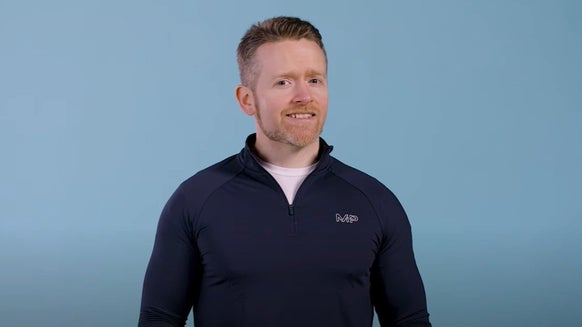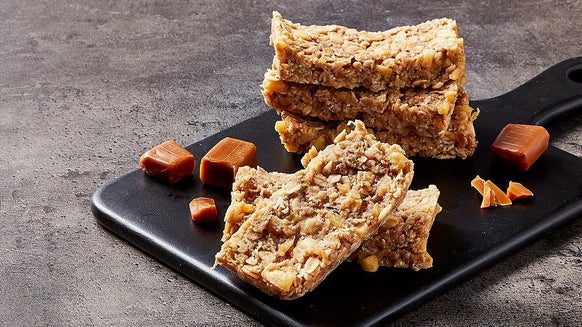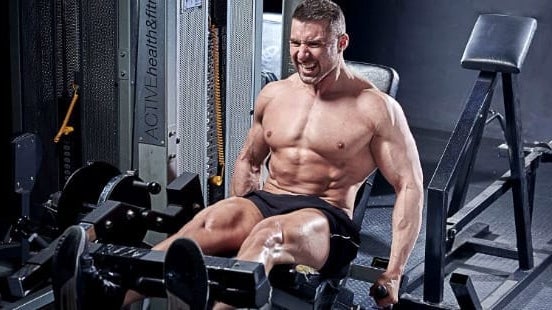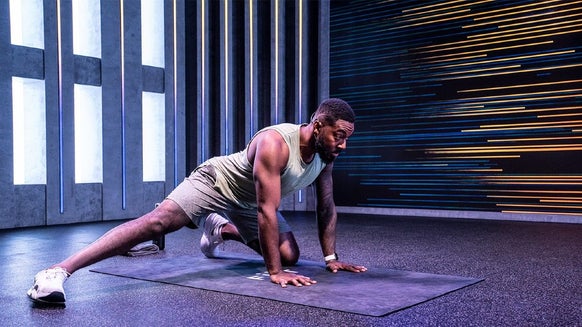
Gain Like Bane
Speak of the gains and they shall appear. There’s also some work and a few lifestyle adjustments involved too, as fans of the Dark Knight Rises noticed in Tom Hardy’s portrayal of Batman’s built nemesis, Bane. Gains come from immense adjustments to your workout plan. Fans of Hardy will have seen him bulk up for Bronson and achieve lean muscle for MMA film, Warrior, but Bane’s body type is considerably bigger than both, so how did he do it?
Bane Workout Plan
| Monday | Workout 1 |
| Tuesday | Rest Day |
| Wednesday | Workout 2 |
| Thursday | Rest Day |
| Friday | Workout 3 |
| Saturday | Rest Day |
| Sunday | Rest Day |
Stick to a lower rep plan to encourage myofibrillar hypertrophy. We suggest three-five sets of three-five reps. Beginning with the knowledge of your one-rep max, start week one at approximately 40 per cent of this figure. Increase the weight you lift by five percent each workout.
In a Jonathon Ross interview, Hardy eluded that he “cheated” to put on all his mass – not with drugs, but by consuming excessive junk food, including pizza and ice cream, along with proteins and carbs such as chicken and rice. Further to this, mass gain protein shakes and supplements played a big role.
This nutrition plan is hardly ideal for the average bodybuilder. Bearing in mind Hardy will have worked to a schedule with the deadline of filming, excessive consumption of junk food is not a sustainable diet. However, what you can take from Hardy’s diet is the protein and a gradual increase in calories (if measured against the amount of energy you will spend in the gym).
The three-day workout plan consists of intense sessions that will burn off a lot of excess calories and fats. Your aim is to gradually build so that your body adjusts to the increased consumption of carbs and protein. This works the same as cutting calories; you should make a long-term plan and designate your week-on-week consumption, increasing it in correlation with the weight you are lifting.
Use This Workout Plan To Gain Like Bane:
Workout 1:
- Set an adjustable bench to an incline of 30-45 degrees.
- Lie on your back on the bench and hold a pair of dumbbells directly above your shoulders with your arms fully extended.
- Pull your shoulder blades together, and slightly stick out your chest.
- Lower both dumbbells to the sides of your chest.
- Pause, and then press the dumbbells back to the starting position.
- As you’re in a bent-over position, using the correct form is key to avoiding injury. So, keep your back straight and almost parallel to the floor.
- Don’t stand too upright, as you risk turning this from a bent-over row into an upright row.
- Keep your knees bent and your torso positioned forward slightly.
- Lift the weight to your sternum, keeping your elbows tucked in and close to your body.
- Stand with your body upright and core muscles braced, looking straight ahead.
- Hold the bar on your upper chest, gripping it with hands just wider than shoulder-width apart.
- Press the bar directly overhead.
- Don't tilt your hips forward during the move. Keep the core engaged throughout.
- Dip the head under the bar to finish the top of the movement.
- Return to the start position and repeat.
- Stand with your feet shoulder-width apart, holding a dumbbell in an overhand grip.
- Sit your hips back and lower into a squat, letting the dumbbell hang down to touch the floor directly beneath your chest.
- Your back should be straight and you should keep your chest and head up.
- Return to standing and lift the dumbbell explosively using your legs and back.
- Once it reaches the level of your hips, start pulling the dumbbell up with your arm, using the momentum created by your legs.
- As the dumbbell reaches shoulder height, quickly flip your elbow underneath the weight and press it overhead, locking out your elbow.
- You shouldn’t be struggling to press the weight – it should be an easy extension of the move, with most of the work done by your legs to create momentum during the first stage of the lift.
- Try using a lighter weight if you find you have to press the weight mostly with your arm.
Reverse the movement to return to the start, moving more slowly than in the explosive lifting phase. Do all your reps on one side, then switch.
- With feet slightly narrower than hip width apart, keep your back straight, look forward and slowly bend down to grip the barbell. Ensure the grip is overhand.
- With a slight bend in the knee and shoulders pinned right back, mentally visualize the muscle that you are about to stimulate; the hamstrings.
- Gradually lower the barbell by sticking your backside out as far as physically possible, ensure that you are lowering the bar as much as you can without hurting your back but also feeling the muscle stretch. As an indicator, the barbell should be lowered below your knees as a bare minimum.
- Throughout the movement; keep the slight bend in the knees, the barbell close to you at all times and look forward without compensating any neck strain preferably.
- Additionally, during the lowering phase you should be inhaling your breath as much as possible.
- First, start with your feet shoulder-width apart and take a firm grip of the bar.
- Rest the bar on your upper back around midway down your traps. Keep your chest puffed out and very slightly turn your feet out (around 40 degrees).
- Take a deep breath, retract your shoulder blades and brace your core. Lowering yourself down by bending your knees until they are parallel to the floor. Keep your heels glued to the ground throughout.
- Your quads do a lot of the work towards the top end of the squat, so power up on the ascent from your mid-foot to heel while exhaling.
- Remember, your spine should remain neutral throughout. At no point should there be any bending or curving of the back.
- Either re-rack or repeat.
Workout 2
- Step up to the rack and rest the bar on your upper chest. The bar should be close to your neck, but not touching it.
- Place your fingers under and around the bar, so that the elbows lift forward, up, and away from the body.
- The hands are placed shoulder-width apart. Try to get your elbows up to bar height throughout this move.
- Ensure your upper chest and front of your shoulders are taking the weight of the bar. At no point do your fingers support the bar.
- With a good upright spinal position and a lifted chest, the chest supports the bar.
- The hands and fingers will stop the bar rolling forward.
- Now unrack the bar and step back away from the rack. Place feet a bit wider than hip-distance apart with the toes pointed out slightly.
- Keep your spine neutral and core engaged
- Sit until your knees are at a 90 degree angle
- Power back up and repeat
- Step up to and under a barbell with your feet angled slightly outward, at hip-width apart.
- Bend over and grip the barbell with both hands at shoulder width.
Bend your knees until the bar almost touches your shins.- Hold a neutral spine, engage the core and glutes.
- Pick the bar up off the ground.
- Concentrate on pushing the floor away with your legs rather than thinking of it as pulling the bar.
- Continue pressing down with your legs until the barbell passes your knees and you are upright.
- Control the release of the movement towards the ground.
- Lie flat on your back on a bench.
- Grip the bar with hands just wider than shoulder-width apart, so when you’re at the bottom of your move your hands are directly above your elbows. This allows for maximum force generation.
- Bring the bar slowly down to your chest as you breathe in.
- Push up as you breathe out, gripping the bar hard and watching a spot on the ceiling rather than the bar, so you can ensure it travels the same path every time.
- Start by holding the bar with a shoulder-width grip in front of your thighs.
- Squat down slightly, then drive through your heels to explode upwards, using the momentum to help pull it up to chest height and catching it on your upper chest and front shoulder position.
- Pause for a second, then lower the bar back to the start position.
- Keep your core muscles braced throughout.
- Reach up and grip the bar approximately shoulder-width apart — with an underhand, supinated grip (palms facing towards you).
- Hang from the bar with your arms extended. Engage your lats and rhomboids by pulling them back and down as well as bracing through your core to ensure you don’t swing. Squeeze your shoulder blades together.
- Pull your body up, squeezing your shoulder blades and driving your elbows towards the hip — stop when they’re in line with your body or chin is over the bar and your chest touches.
- Pause at the top, and reverse the movement by slowly lowering yourself back to the starting position — stay in control during the lowering phase.
Sitting Dumbbell Shoulder Press
- Position yourself on a vertical bench with a pair of dumbbells by your feet.
- Use a partner to help place the dumbbells in position above your head, or pick the dumbbells up off the floor by deadlifting them onto your knees and then bring them up to your start-pressing position by flicking them up off your knees one at a time.
- Start from the top of the movement with your arms straight but without your elbows locked out.
- Control the weight down for the eccentric portion of the movement until your arm breaks parallel with the ground (the dumbbells should be in line with your head on either side).
- Pause for a second at the bottom of the movement and press upwards to perform the concentric contraction (the dumbbells should become closer as you continue to press above your head).
- Once you reach the top of the movement continue to perform the rest of the reps within the set.
Workout 3
- Start with feet shoulder-width apart and hold the barbell over your toes. Sit into a squat until your shins just about touch the bar.
- Push your hips back and grab the barbell so your palms are facing your body and your hands are shoulder-width apart.
- Keep your hips down, chest lifted, eyes forward, and arms long.
- Keep your core very tight and drive through your heels, pushing the floor away from you, to pull the bar quickly up to your chest, just in front of your collarbone.
- Keep your spine long. Explode as you pull the bar, keeping it as close to your body as you can.
- To pull the bar underneath your shoulders, shrug your shoulders up and point your elbows forward.
- As soon as the bar reaches your chest, drive through your heels again and press directly overhead and straighten your arms and legs.
- Keep your core engaged throughout as you complete the movement and return to the start position.
- Start in a high plank position, holding a dumbbell in each hand.
- Your hands should be directly under your shoulders and your body should form a straight line from your head to your feet.
- Slowly pull one dumbbell up to your hip and squeeze your shoulder blade, keeping your elbow close to your body.
- Concentrate on keeping your body as rigid as possible. Widen your feet if you need more stability.
- Return to the start position and repeat with the opposite arm.
- Sit down on a flat bench with a dumbbell in each hand resting on your thighs. (The palms of your hands should be facing each other).
- Lower yourself down until you’re lying flat. The dumbbell should remain close to your chest.
- Once you’re lying flat, press the dumbbells up above your chest. This is your starting position.
- With a slight bend in your elbows, lower your arms laterally until you feel a stretch in your chest. The dumbbells should be level with your chest at both sides.
- Return your arms to the starting position and squeeze your pecs together.
- Remember to keep your arms steady throughout the movement.
- Don’t let the dumbbells touch as they meet at the top, holding for a second in the contracted position.
- Repeat the movement for the amount of reps you need.
- Take a firm grip of the bar with your palms away from you or down.
- Take a slightly wider than shoulder-width grip and hang down with your arms extended. If your feet are still touching the ground, cross them over behind you.
- Keep a tight core, as you don’t want to start swinging, around under the bar, and retract your shoulder blades together.
- Now you’re ready to for the hard part, drive your elbows down towards the ground and your upper chest towards the bar.
- This is normally the part where people start to swing or use momentum so make sure your core is tight and keep you stable.
- Once you are at the top, chin above the bar and level with your chest start to lower yourself nice and slow towards your starting position.
- Take a big step forward with your left or right leg and slowly drop your back knee towards the ground. Make sure your toes are pointing forwards, hips are tucked under, and your front knee does not move past your ankle.
- As you drop to the ground, stop when your leading knee reaches slightly below 90° and your front thigh is parallel to the floor. Remember to not let your back knee touch the ground – this ensures your muscles are fully activated throughout the movement.
- Push off your front foot and drive the back leg forward to step straight into another forward lunge. Keep your torso upright and core activated as you move.
- Returning to the standing position between each step can provide a small rest and can help you keep your form on each rep.
Take Home Message







